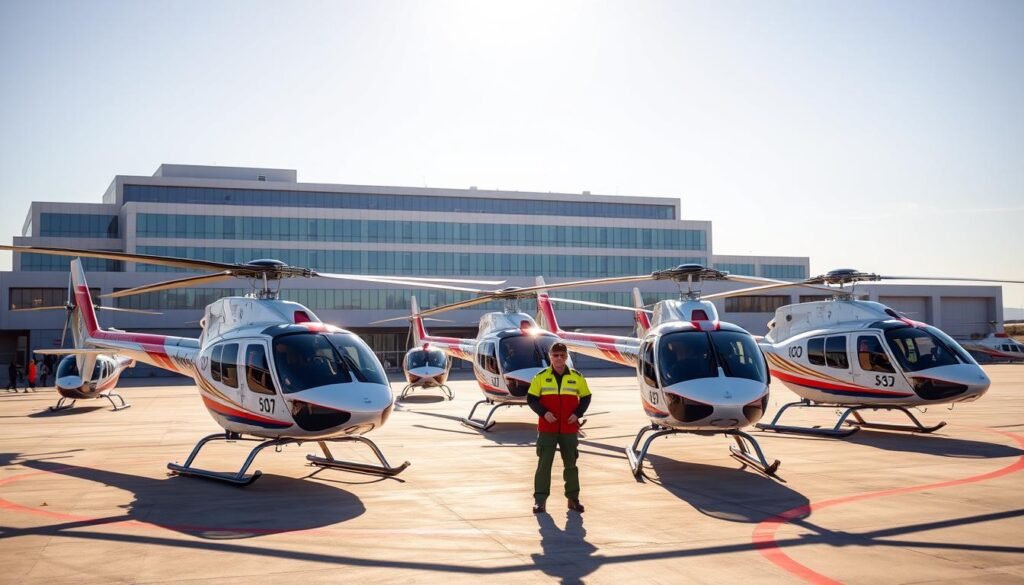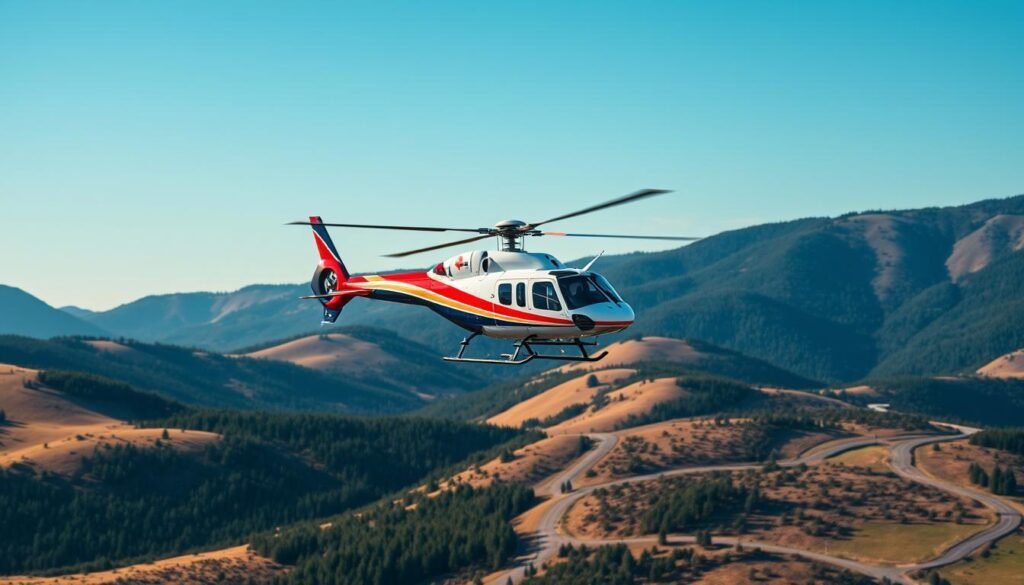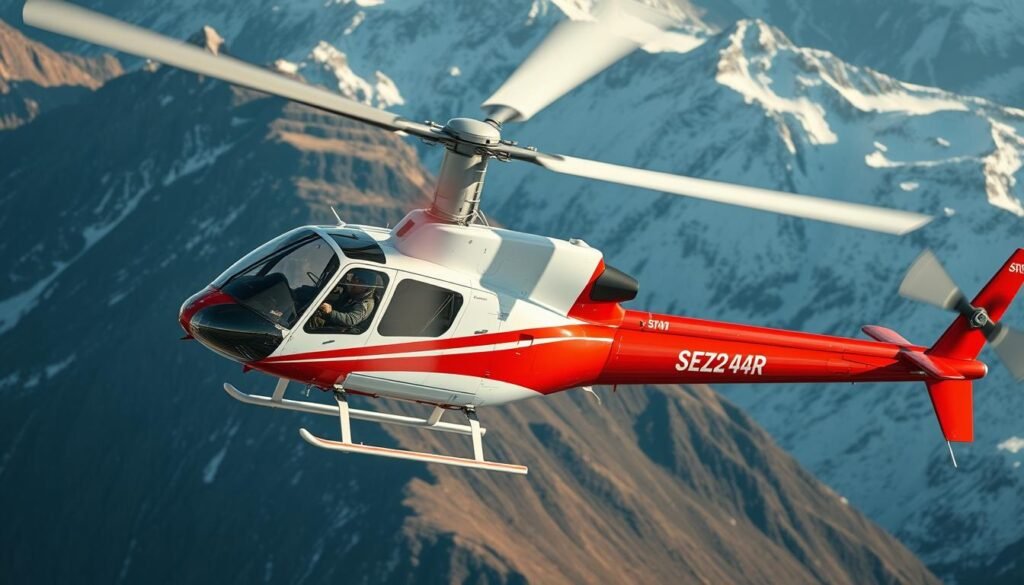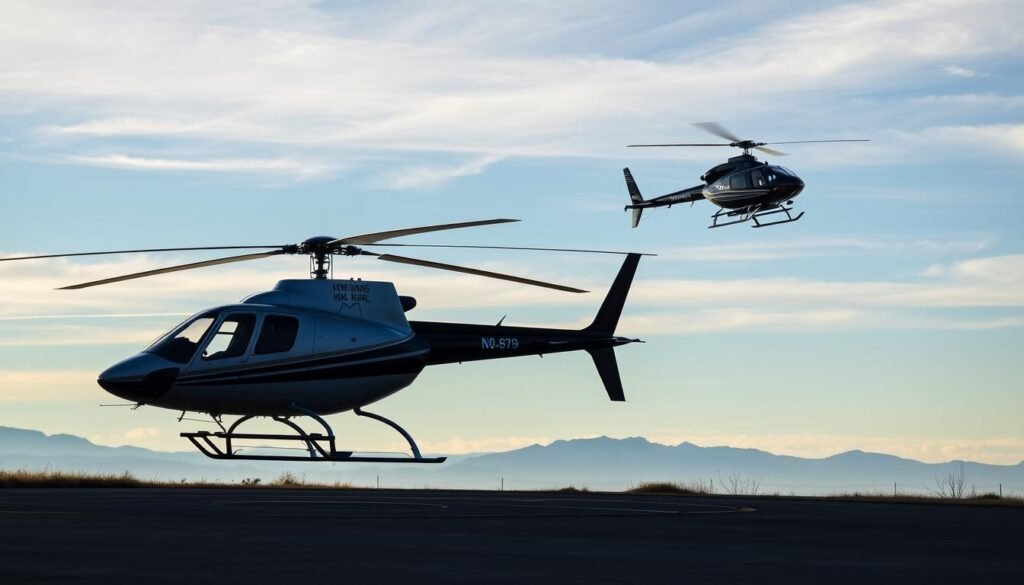One in five time‑sensitive transfers now depend on rapid airborne transport, a surge that reshapes careers and patient outcomes nationwide.
This guide frames the choice between two prominent air ambulance services through an objective, future‑ready lens. It focuses on safety, patient care, and career pathways for pilots, flight nurses, paramedics, and communications staff.
One operator runs 60+ bases across the United States and offers specialty neonatal and ECMO support, while the other is a nonprofit serving the Pacific Northwest and rural communities with both helicopters and fixed‑wing aircraft.
The article will compare jobs, qualifications, fleet and technology, safety programs, and compensation. It also notes collaboration models with hospitals and fire departments and uses verified facts such as base counts and headquarters details to help readers weigh long‑term fit.
For a broader look at leading air ambulance services and how each company positions itself in a growing market, see this overview.
best air ambulance service in the United
Key Takeaways
- Scale Matters: One provider’s 60+ bases offer high‑acuity transport opportunities.
- Community Impact: The nonprofit focuses on rural access and close healthcare system ties.
- Specialty Capabilities: Neonatal and ECMO transports signal complex clinical roles.
- Fleet Diversity: Helicopters and fixed‑wing craft shape mission range and crew needs.
- Safety & Culture: Robust safety programs and training are core differentiators.
- Career Fit: Useful for pilots, clinicians, and communications professionals assessing growth.
At-A-Glance Comparison: PHI Air Medical and LifeFlight For EMS Careers
A concise snapshot helps professionals compare two leading air ambulance services for career fit and clinical scope.
Who They Are, Where They Operate, And What They Do
The first is a national, for-profit operator with an extensive U.S. footprint and more than 60 bases. It runs both helicopters and fixed-wing aircraft and offers specialty neonatal and ECMO transport that appeals to clinicians seeking high-acuity experience.
The second is a nonprofit focused on the Pacific Northwest and rural access. It deploys mixed aircraft types and emphasizes partnerships with local hospitals and community health systems.
- Both organizations perform scene response and interfacility transport to shorten time to treatment for critical patients.
- They integrate equipment and technology to support advanced onboard care and safe transport across varied terrain and weather.
- Common roles recruited include pilot, flight nurse, flight paramedic, and communications staff for mission operations.
| Feature | National Operator | Regional Nonprofit | Notes |
|---|---|---|---|
| Coverage | 60+ bases nationwide | Pacific Northwest focus | Scale affects mission variety and advancement |
| Aircraft | Helicopters & fixed-wing | Helicopters & fixed-wing | Mix chosen by distance, weather, terrain |
| Specialty Care | Neonatal & ECMO capable | Advanced critical care transport | Good options for nurses and paramedics |
| Partnerships | Hospital & agency networks | Local healthcare collaborations | Enables seamless patient handoffs |
PHI Air Medical vs LifeFlight: Comparing EMS Helicopter Employers
Operational philosophy—nationwide reach versus regional stewardship—directly influences how crews work, how care is delivered, and how teams grow. This section profiles each company model and explains practical differences for medical professionals and pilots.

Company Profiles And Mission Focus
National Network: The large, for-profit operator runs 60+ bases and emphasizes rapid mobilization for high‑acuity transports, including neonatal and ECMO missions. Its scale creates standardized clinical protocols and broad case variety.
Regional Nonprofit: The nonprofit serves the Pacific Northwest with helicopters and fixed‑wing assets. It prioritizes access for rural and isolated communities and reinvests revenue into training, outreach, and mission sustainability.
Nonprofit Versus For-Profit Dynamics And What That Means For Teams
Reinvestment in a nonprofit often funds community programs, staff education, and local partnerships. A larger commercial network can accelerate fleet upgrades and technology adoption through capital investment.
Both models commit to safety and multidisciplinary care by highly trained teams. Staffing patterns, scheduling, and the case mix differ, which affects daily workflow, retention, and professional development for medical professionals.
| Feature | National Network | Regional Nonprofit |
|---|---|---|
| Coverage | 60+ bases nationwide | Pacific Northwest, rural focus |
| Specialty Care | Neonatal & ECMO capable | Advanced critical care with community ties |
| Team Impact | Standardized protocols, varied case mix | Local partnerships, mission-driven scheduling |
Service Footprint And Coverage: Bases, Regions, And Community Impact
Coverage patterns shape which patients receive rapid transport and which crews gain diverse case experience. Network density matters for response times, interfacility transfers, and links to specialty centers.
PHI Air Medical: Nationwide Presence With 60+ Bases And Hospital Partnerships
The national network maintains 60+ U.S. bases and coordinates with hospitals and public safety agencies to speed response and ensure continuity of care. This wide footprint raises availability for interfacility transport and shortens time to specialty medical facilities.
Dispatch centers allocate assets across states, creating redundancy that supports safer go/no‑go choices during peak demand.

Life Flight Network: Pacific Northwest Reach And Rural Access Commitments
The regional operator concentrates helicopters and fixed‑wing craft across the Pacific Northwest to serve rural and isolated communities. That focus lets crews reach patients who might otherwise lack timely ambulance services.
Partnerships with local hospital systems streamline transfers, reduce delays, and optimize outcomes. Terrain, weather, and distance shape platform selection and mission profiles, affecting scene call versus interfacility volumes.
- Community Impact: Expanded access and reduced time‑to‑care for remote areas.
- Operational Notes: Dispatch and communications centers manage triage and asset allocation across regions.
- Outcome Metrics: Coverage density supports redundancy and better activation coordination.
| Feature | Nationwide Network | Regional Network |
|---|---|---|
| Coverage | 60+ bases, multi‑state reach | Pacific Northwest, rural focus |
| Primary Benefit | Interfacility transport availability | Rapid rural access and local integration |
| Operational Challenge | Cross‑region coordination | Terrain and weather constraints |
Fleet, Equipment, And Technology: Helicopters, Fixed-Wing, And Critical Care Capabilities
Modern transport platforms pair aviation advances with clinical systems to keep critically ill patients moving quickly and safely.

Aircraft Mix And Mission Use
Operators match rotor‑wing and fixed‑wing aircraft to mission need. Short‑range scene responses use agile rotor craft, while longer interfacility transport favors fixed‑wing platforms.
Typical aircraft types include light utility helicopters and turboprop airplanes that expand range and speed for regional transfers.
Specialty Care Transport
Some programs support neonatal transfers and ECMO retrievals, requiring added monitoring and coordination. These missions raise the bar for onboard staff and gear.
Advanced life support cabins include ventilator management, hemodynamic monitoring, and secure infusion systems to sustain critical care during flight.
Equipment Standards And Technology Investments
Power redundancy, crash‑rated mounts, and standardized checklists protect continuity of care. Investments span avionics, weather tools, telemedicine links, and data capture for post‑mission review.
- Load planning and weight balance differ between rotor and fixed platforms.
- Crew resource management integrates pilots and clinicians through standardized workflows.
- Maintenance cycles and fleet refresh decisions drive uptime and mission readiness.
For a market overview of leading air ambulance services and growth drivers, see this air ambulance services overview.
Medical Teams And Patient Care Standards
Flight crews deliver hospital-quality interventions in compact, moving environments to bridge time to specialty care. Teams are staffed by highly trained medical clinicians who provide advanced critical care during transport. That blend of skills and equipment defines what patients receive en route.

Highly Trained Medical Professionals And Onboard Scope Of Practice
Crew Composition: Typical teams include a flight nurse and a flight paramedic or critical care RN and a specialty clinician depending on mission needs. Each professional meets credentialing for advanced procedures.
Scope covers airway management, ventilator operation, vasoactive titration, and invasive monitoring where protocols allow. Providers use portable ventilators, infusion pumps, and advanced monitors to sustain critical care.
Protocols For Critical Situations And Interfacility Medical Transportation
Evidence‑based protocols guide cardiac, neuro, trauma, neonatal, and complex medical cases. Pre‑notification and stabilization differ for interfacility transfers versus scene responses.
Training & Safety: Recurrent simulation, credentialing pathways, and sterile cockpit risk assessments keep services aligned with aviation limits. Teams practice handoffs, documentation standards, and patient advocacy to protect continuity of care.
“Teams prioritize clear communication, data capture, and CRM so patients receive consistent, high‑quality care during every mission.”
| Focus Area | What It Means | Outcome |
|---|---|---|
| Crew Competency | Advanced life support and transport skills | Faster stabilization and safe transfers |
| Protocols | Evidence‑based guides for critical situations | Standardized, repeatable care |
| Safety Practices | Risk assessments and sterile cockpit rules | Reduced clinical and operational errors |
Jobs, Qualifications, And Safety Culture
Crew roles, credentialing, and safety systems shape how fast teams mobilize and how well patients receive care during transport. The sector hires experienced pilots, flight clinicians, and communications staff who work under tight protocols.
Pilot, Flight Nurse, Flight Paramedic, And Communication Roles
Pilots need turbine time, instrument proficiency, and night currency. They also complete company checkrides and recurrent sims.
Flight nurses and paramedics are typically trained medical clinicians with ACLS, PALS, NRP, and advanced trauma credentials. They operate complex equipment and deliver critical care in tight spaces.
Communications specialists triage requests, coordinate assets, and use dispatch systems to support safe missions.
Job Requirements, Training Pathways, And Safety Programs
Onboarding includes scenario-based simulation, annual competencies, and just-culture reviews. Recurrent drills focus on high-risk, low-frequency events.
Safety programs combine SMS, preflight briefs, and structured debriefs to close learning loops. Fitness standards and lifting protocols preserve crew endurance and egress safety.
| Role | Typical Credentialing | Key Safety Expectation |
|---|---|---|
| Pilot | IFR, turbine hours, company checkride | CRM, weather decision-making, aircraft familiarity |
| Flight Clinician | ACLS, PALS, NRP, trauma certs | Protocol adherence, equipment competence, simulation currency |
| Communications | Dispatch certification, emergency triage training | Clear protocols, timely coordination, fatigue management |
Candidates should match personal strengths to a company’s mission, regional needs, and team culture. For hiring trends and roles, see this overview of top operators: top helicopter employers hiring.
Compensation, Benefits, And Career Growth
Total rewards packages are a key differentiator as the market for air ambulance service talent grows. Employers compete on pay, schedule design, and professional development to attract pilots, clinicians, and dispatch staff.
Pay Scales, Scheduling Models, And Differential Pay
Base pay, locality adjustments, and shift differentials make up total cash compensation. Night, weekend, and holiday premiums add meaningful income.
Common schedules include 2/2/2 rotations and 7‑on/7‑off blocks. Each model changes work-life balance and overtime potential.
Healthcare Benefits, Retirement, And Professional Development
Many services offer comprehensive healthcare, dental, vision, retirement matching, and disability coverage. Tuition assistance and CME support help clinicians stay current.
Promotion Paths And Continuing Education Support
Career steps often move from clinician or pilot to educator, safety lead, base manager, or regional operations roles. Relocation and transfer options foster mobility across networks.
“Evaluate the full compensation statement — benefits, training, and long-term growth matter as much as headline pay.”
| Component | Typical Offer | Why It Matters |
|---|---|---|
| Base Pay + Differentials | Salary + night/weekend premiums | Predictable income and premium pay for harder shifts |
| Benefits Package | Medical, dental, vision, retirement match | Reduces personal risk and supports retention |
| Development Support | Tuition, CME, cross-training | Boosts credentials and internal promotion odds |
Conclusion
Choosing between a national network and a regional nonprofit comes down to how each model fits a candidate’s mission and life priorities. Both deliver air ambulance services with strong safety cultures, but scale, funding, and geography shape daily work and growth paths.
The national operator’s 60+ base footprint and specialty critical care transports offer varied case mix and mobility. The regional nonprofit prioritizes rural access and community impact. Both use mixed aircraft, modern equipment, and evolving technology to support complex patient care and critical care transport for critically ill patients.
Candidates should weigh compensation, schedules, promotion paths, base location, and culture. Reach out to recruiters, request a base visit where allowed, and talk with current staff to confirm fit. Informed, mission‑aligned choices grounded in safety and patient care position professionals for long‑term success in air ambulance careers.



